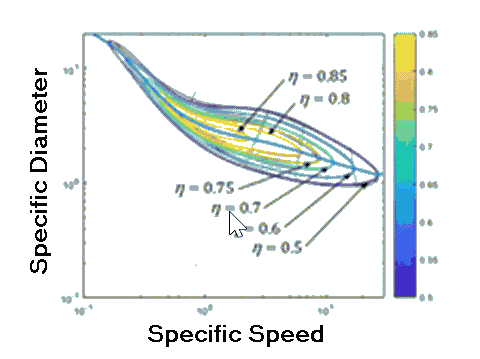
Compressor5_CL

The function Compressor5_CL(n_s, d_s, eta_max) returns isentropic efficiency of a compressor given the specific speed and specific diameter. The function uses a curve fit to the Balje curves to provide the efficiency of a compressor given the specific speed and specific diameter. These curves were developed in:
Sondelski, Becky, Mass Optimization of a Supercritical CO2 Brayton Cycle with a Direct Cooled Nuclear Reactor for Space Surface Power, M.S. Thesis, Dept. of Mechanical Engineering, UW-Madison, (2019).
and are based on the Balje curves presented in Balje, O.E., Turbomachinery, New York, Wiley & Sons, (1981).
The calling protocol is:
Compressor5_CL(n_s, d_s, eta_max)
Inputs:
n_s = specific speed (rad) = omega*sqrt(V_dot)/Dh_s^0.75
where
omega = angular velocity
V_dot = inlet volumetric flow rate
Dh_s = isentropic enthalpy rise
d_s = specific diameter (-) = D*Dh_s^0.25/sqrt(V_dot)
where
D = diameter
eta_max = desired maximum efficiency - use if you want to adjust the maximum possible efficiency, otherwise set to any negative number (Balje curve predicts a maximum possible efficiency of 87.105%)
Output:
Isentropic efficiency
Note that the companion function Compressor6_CL provides the optimal specific diameter at a given value of specific speed in order to stay on the peak of the Balje curve.
Example:
$Load Component Library
n_s=2
d_s=1.5
eta_max=-999
eta=compressor5_CL(n_s, d_s, eta_max)
{Solution
eta = 0.5611
}